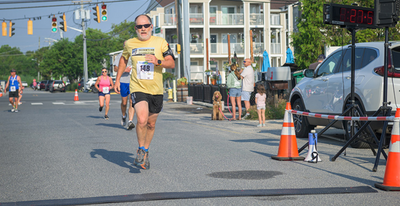2 min
Beat the heat: Six expert tips to stay active and safe this summer
Exercising should be a priority year-round, but summer heat and humidity can challenge that commitment and make it harder to meet your daily step goal. Daniel White, associate professor of physical therapy at the University of Delaware, offers some practical tips for reporters working on stories about staying active and safe during the hottest months of the year. 1. Time it right Plan to exercise in the early morning or evening hours when temperatures are cooler. Delaware’s scenic beaches and boardwalks can be the perfect spot to catch a summer breeze or stop to enjoy the scenery while getting your steps in. 2. Prioritize hydration In the heat, people perspire more and need to replenish fluids. Always carry a water bottle with you and sip from it regularly. Dehydration can lead to lightheadedness, balance issues, muscle cramps and even heat stroke. And don’t forget sunscreen — SPF is necessary for any outdoor workout year-round. 3. Reduce the intensity It may not feel like as much of a workout, but the fact that you’re out there pounding the pavement is the most important thing. According to the U.S. Department of Health and Human Services’ Physical Activity Guidelines for Americans, movement is beneficial, and the more, the better. Performing any physical activity at half intensity far outweighs not doing it at all. 4. Opt for the indoors Pickleball has become all the rage, so finding an indoor court or other activities you can enjoy in air conditioning is a great alternative. Walking on a treadmill at the gym or getting in laps at the Christiana Mall are good options too during a heatwave. 5. Dive in Swimming and water aerobics are great ways to stay active and keep cool. Facilities like the YMCA have designated lap-swim-only hours or classes. Simply splashing around can be an easy way for those just starting their fitness journey to incorporate more movement into their days. 6. Walk with purpose The bottom line is the more you walk, the healthier you’ll be. Just 3,000 steps a day is a solid start, according to White’s studies, especially for older adults. Reaching 6,000 steps has been shown to protect against arthritis complications. But when it comes to steps, the sky’s the limit. Walking at a moderate pace, where you’ve built up a sweat, will strengthen your muscles and bones and lower your risk of cardiovascular disease and cancer. To arrange an interview with White, reporters can reach him directly by visiting his profile page and clicking on the contact button.







